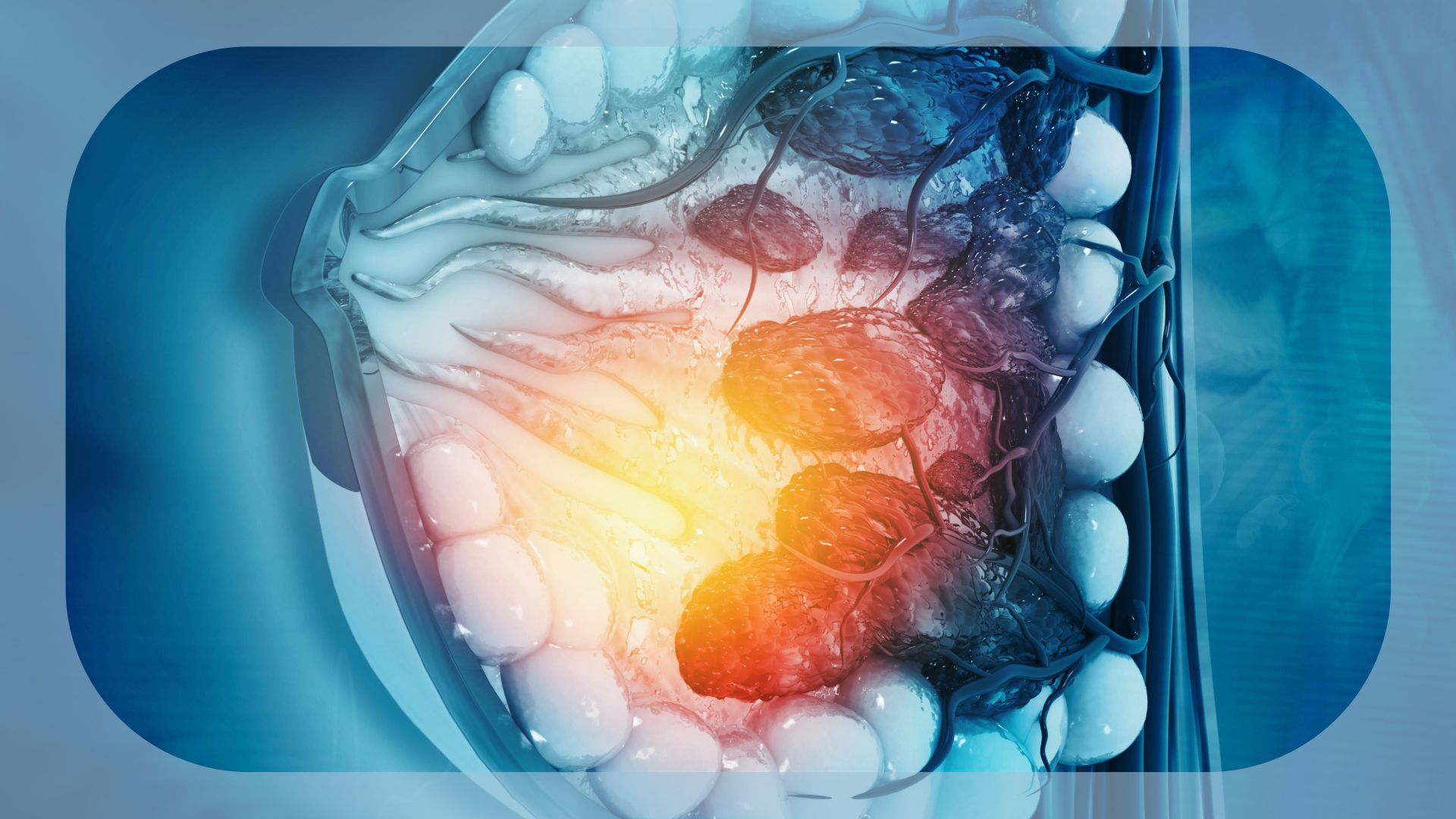ctDNA in Breast Cancer | Image Credit: © Rasi – stock.adobe.com
Circulating tumor DNA (ctDNA) positivity was associated with increased risk of recurrence and worse overall survival (OS) in patients with early-stage breast cancer, irrespective of subtype, based on findings from a real-world analysis using data from the Flatiron Health Research Database presented at the 2025 ASCO Annual Meeting.
Among 4,639 patients (2.4% of 195,279 patients with available data) with early-stage breast cancer who underwent at least 1 ctDNA test, 921 (19.9%) had at least one positive result. These patients were more likely to be younger (median age, 58 years vs 64 years) and present with stage III disease compared with non-tested individuals. Testing was most frequently conducted in the adjuvant setting (94%), and most patients tested had stage I (43.3%) or stage II (37.1%) disease. The median number of tests per patient was 2, and 19.9% of tested patients had at least 1 positive result.
Patients with a ctDNA-positive result had a 5-year OS probability of 85% (95% CI, 80.0%-91.0%) compared with 98% (95% CI, 97.0%-99.0%) in ctDNA-negative patients. Recurrence-free survival (RFS) was significantly lower in the ctDNA-positive cohort across all breast cancer subtypes evaluated. The association between ctDNA positivity and recurrence remained consistent in sensitivity analyses that excluded patients with recurrence within 4 months of ctDNA testing.
Trends over time indicated increased adoption of ctDNA testing in clinical practice, rising from 1.6% of eligible patients in 2020 to 4.25% in 2023. Testing prevalence was highest in the hormone receptor–negative/HER2-negative subgroup (4.9%), followed by hormone receptor–positive/HER2-negative (3.5%), hormone receptor–positive/HER2-positive (2.9%), and hormone receptor–negative/HER2-positive (1.9%).
“Patients who were ctDNA-positive in the adjuvant setting had a higher risk of recurrence and worse OS, independent of the timing of the ctDNA test. Clinical integration opportunities include using ctDNA to refine risk stratification and inform treatment personalization, especially in identifying patients who may benefit from escalated therapies,” lead study author Erin Fidyk, ANP-BC, MBA, senior clinical director of Oncology at Flatiron Health, and colleagues noted in a poster presentation.
Retrospective Study Design
This retrospective, real-world cohort study was designed to evaluate ctDNA testing trends and associated clinical outcomes among patients with early-stage breast cancer using data from the Flatiron Health Research Database. This US-based, deidentified electronic health record–derived database comprises structured and unstructured patient-level data from approximately 800 community and academic cancer care sites, encompassing 280 oncology practices nationwide. The data cutoff date for this analysis was August 31, 2024.
Eligible patients included those diagnosed with stage I to III early-stage breast cancer on or after January 1, 2018, with documented hormone receptor and HER2 status at the time of initial diagnosis, surgery, and at least one commercial ctDNA test in the early-stage setting. ctDNA positivity was defined as having at least 1 positive test result. Patients were required to be at least 18 years of age at the time of diagnosis. Patients with multiple breast primary tumors were excluded from the analysis.
Baseline demographic and clinical characteristics were stratified by breast cancer subtype and ctDNA status. Unadjusted Kaplan-Meier methods were used to estimate RFS and OS according to ctDNA results. Multivariable Cox proportional hazards models were constructed to assess the association of ctDNA positivity with RFS, adjusting for age, race/ethnicity, stage at diagnosis, ECOG performance status, year of diagnosis, insurance status, treatment setting, and receipt of neoadjuvant or adjuvant systemic therapy.
A sensitivity analysis excluded patients who experienced recurrence within 4 months of a positive ctDNA result to mitigate potential reverse causation. Both RFS and OS analyses were indexed to the date of surgery to ensure temporal consistency in outcome measurement.
The median time from diagnosis to first ctDNA test decreased significantly, from 35 months among patients diagnosed prior to 2022 (n = 1,725) to 8 months among those diagnosed in 2022 or later (n = 2,829).
RFS Analysis Summary and Limitations
At 3 years, unadjusted RFS probabilities were lower for ctDNA-positive vs ctDNA-negative patients in each group: 76% vs 98% in the hormone receptor–positive/HER2-negative subgroup (adjusted HR, 10.7; 95% CI, 7.08-16.10); 61% vs 96% in the hormone receptor–negative/HER2-negative subgroup (adjusted HR, 10.7; 95% CI, 6.34-18.10); 85% vs 97% in the hormone receptor–positive/HER2-negative subgroup (adjusted HR, 11.8; 95% CI, 4.54-30.80); and 78% vs 97% in the hormone receptor–negative /HER2-positive subgroup (adjusted HR, 8.94; 95% CI, 1.72-46.40).
“Longer follow-up time and prospective validation in clinical trials are needed to confirm the prognostic value of ctDNA positivity,” Fidyk concluded.
Study limitations included the potential for selection bias, as findings may have reflected trends among early adopters of ctDNA testing and may not be generalizable across diverse clinical settings or the broader oncology population. Additionally, the clinical rationale for ordering ctDNA testing (routine surveillance vs symptom-driven use) was not captured, limiting interpretability.
The ability to perform adjusted OS analyses was limited by the short follow-up duration and a low number of events, particularly among patients with ctDNA-positive tumors. Finally, investigators noted that unmeasured confounding factors may be present, and causal inferences cannot be drawn from these observational data.
Reference
Fidyk E, Ward PJ, Estevez M, et al. Real-world (rw) ctDNA testing trends and associated outcomes in patients (pts) with early stage breast cancer (EBC). J Clin Oncol. 2025;43(suppl 16):555. doi:10.1200/jco.2025.43.16_suppl.555
